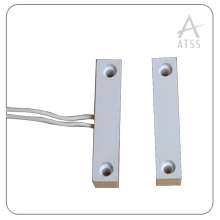SECURITY SYSTEMS SOLUTIONS
-
 Access Control
Access Control
-
 Asset Tracker
Asset Tracker
-
 Automatic Door
Automatic Door
-
 Baggage Scanner
Baggage Scanner
-
 Bell Timer
Bell Timer
-
 Boom Barrier
Boom Barrier
-
 BMS
BMS
-
 Burglar Alarm
Burglar Alarm
-
 Canteen Management
Canteen Management
-
 CCTV Camera
CCTV Camera
-
 Video Analytics
Video Analytics
-
 Anpr Camera
Anpr Camera
-
 People Counting Camera
People Counting Camera
-
 Central Vacuum Cleaner
Central Vacuum Cleaner
-
 DFMD
DFMD
-
 Electric Fence
Electric Fence
-
 EAS
EAS
-
 Fire Alarm
Fire Alarm
-
 Fire Hydrant
Fire Hydrant
-
 Fire Suppression
Fire Suppression
-
 Flap Barrier
Flap Barrier
-
 Garage Door
Garage Door
-
 Gas Detector
Gas Detector
-
 Gate Automation
Gate Automation
-
 GSM Communicator
GSM Communicator
-
 Guard Patrol
Guard Patrol
-
 HHMD
HHMD
-
 Home Automation
Home Automation
-
 Home Theatre
Home Theatre
-
 Hotel Door Lock
Hotel Door Lock
-
 ID Cards
ID Cards
-
 Smart Lights
Smart Lights
-
 IP Network
IP Network
-
 Nurse Call System
Nurse Call System
-
 Occupancy Sensor
Occupancy Sensor
-
 PA Systems
PA Systems
-
 Payroll Software
Payroll Software
-
 Road Blocker
Road Blocker
-
 Smart Lock
Smart Lock
-
 Time Attendance
Time Attendance
-
 Tripod Turnstile
Tripod Turnstile
-
 UVSS
UVSS
-
 Vehicle Gps Tracker
Vehicle Gps Tracker
-
 Video Door Phone
Video Door Phone
-
 Smart Parking System
Smart Parking System
-
 Visitor Management
Visitor Management
-
 Wireless Communication
Wireless Communication
Door Sensor
Door Sensor guide for homeowners: learn how it works, pros & cons, and easy DIY installation tips to boost your home security.
Door Sensor: The Simple Security Upgrade Every Home Needs
Ever wondered how you could make your home safer without spending a fortune?
A door sensor might just be the easiest—and smartest—place to start.
Door sensors are small, affordable, and surprisingly effective devices that alert you whenever a door, window, or even glass panel is opened. They’re widely used in home security systems, but you don’t need a complex setup to benefit from them. Whether you’re a DIY enthusiast or simply looking for quick safety upgrades, understanding door sensors can help you protect your home better.
In this guide, we’ll walk through exactly what a door sensor is, how it works, its pros and cons, installation tips, and even some alternatives you might want to consider.
What is a Door Sensor?
A door sensor is an intelligent device designed to detect when a door, window, or glass surface is opened. These sensors typically work using magnets: when the door is closed, the magnets align and complete a circuit. Opening the door breaks the circuit, triggering an alert—either sounding an alarm, sending a notification, or both.
There are many types of door sensors, but one of the most common for DIY use is the surface mount magnetic sensor.
How Surface Mount Magnetic Door Sensors Work
Surface mount magnetic sensors are exactly what they sound like: sensors mounted on the surface of your door or window. They consist of two main parts:
- Magnetic Strip – usually attached to the moving part (door or window)
- Switch Housing – fixed to the frame
When the magnets are aligned, the switch stays closed, meaning no alert is triggered. When the door or window opens, the alignment breaks, and the system recognizes an intrusion.
These sensors are widely used in closed-circuit alarm systems—the kind that trigger an alarm when the circuit is broken.
Pros of Surface Mount Magnetic Door Sensors
1. Easy Installation
For most models, you can install a surface mount door sensor with adhesive tape or a couple of screws. No complex tools required—perfect for DIY projects.
2. Affordable
Surface mount sensors are generally inexpensive. For hardwired systems, the biggest cost is usually the installation wiring, not the device itself.
3. Wireless Options Available
If you don’t want to deal with wires, there are reliable wireless versions. These are more expensive but save you from drilling holes or running cables.
Cons of Surface Mount Magnetic Door Sensors
1. Visible on the Door or Window
Because they sit on the surface, they’re easy to spot. This might bother you aesthetically—especially in a nicely designed living space.
2. Easier to Tamper With
Their visibility makes them easier for intruders to spot and potentially bypass. If a burglar sees where your sensors are, they may try to enter through unprotected points.
Alternatives to Surface Mount Sensors
If you’re concerned about looks or tampering, a recessed contact might be better. These work similarly but are installed inside the door or window frame, making them invisible and harder to disable. The downside? They require more effort to install—usually involving drilling into the frame.
Choosing the Right Door Sensor for Your Home
When deciding on a door sensor, consider:
- Budget – Hardwired sensors are cheaper, but wireless ones are easier to install.
- Aesthetics – If looks matter, go for recessed models.
- Security Needs – For maximum protection, combine visible sensors (as a deterrent) with hidden ones (for backup).
- Integration – If you have a smart home hub, choose sensors compatible with it for instant phone alerts.
DIY Installation Tips for Homeowners
Tools You’ll Need
- Screwdriver or drill
- Double-sided adhesive (if avoiding screws)
- Measuring tape
- Pencil for marking placement
Step-by-Step Guide
- Choose Location – Align one part of the sensor on the door/window and the other on the frame so they meet when closed.
- Mark and Mount – Use a pencil to mark holes (if screwing) or clean the surface for adhesive.
- Install Sensor – Attach using screws or adhesive.
- Test – Open and close the door to make sure the alarm or notification triggers correctly.
For wireless models, follow the manufacturer’s pairing instructions to connect to your alarm panel or smart home hub.
Maintenance Tips
- Check Alignment – Over time, vibrations or heavy use can cause the sensor parts to shift.
- Replace Batteries – For wireless sensors, replace batteries every 1–2 years.
- Regular Testing – Test your system monthly to ensure proper function.
Real-Life Example: Why Door Sensors Matter
Imagine you’re away on vacation. Without a surface mount magnetic contact, someone could open your back door without you knowing. With a connected sensor, your phone gets an instant alert, and you can act immediately—calling a neighbor or the police.
Conclusion: Small Device, Big Peace of Mind
A door sensor is a small investment that delivers huge returns in safety, convenience, and peace of mind. Whether you choose a budget-friendly surface mount or a discreet recessed model, installing them is one of the easiest steps you can take to improve your home security.
Don’t wait until you experience a break-in or scare—equip your home with door sensors now and sleep a little easier tonight.
Your turn: Have you tried installing surface mount magnetic contact at home? Share your experiences or tips in the comments below!
SECURITY SYSTEMS SOLUTIONS
-
 Access Control
Access Control
-
 Asset Tracker
Asset Tracker
-
 Automatic Door
Automatic Door
-
 Baggage Scanner
Baggage Scanner
-
 Bell Timer
Bell Timer
-
 Boom Barrier
Boom Barrier
-
 BMS
BMS
-
 Burglar Alarm
Burglar Alarm
-
 Canteen Management
Canteen Management
-
 CCTV Camera
CCTV Camera
-
 Video Analytics
Video Analytics
-
 Anpr Camera
Anpr Camera
-
 People Counting Camera
People Counting Camera
-
 Central Vacuum Cleaner
Central Vacuum Cleaner
-
 DFMD
DFMD
-
 Electric Fence
Electric Fence
-
 EAS
EAS
-
 Fire Alarm
Fire Alarm
-
 Fire Hydrant
Fire Hydrant
-
 Fire Suppression
Fire Suppression
-
 Flap Barrier
Flap Barrier
-
 Garage Door
Garage Door
-
 Gas Detector
Gas Detector
-
 Gate Automation
Gate Automation
-
 GSM Communicator
GSM Communicator
-
 Guard Patrol
Guard Patrol
-
 HHMD
HHMD
-
 Home Automation
Home Automation
-
 Home Theatre
Home Theatre
-
 Hotel Door Lock
Hotel Door Lock
-
 ID Cards
ID Cards
-
 Smart Lights
Smart Lights
-
 IP Network
IP Network
-
 Nurse Call System
Nurse Call System
-
 Occupancy Sensor
Occupancy Sensor
-
 PA Systems
PA Systems
-
 Payroll Software
Payroll Software
-
 Road Blocker
Road Blocker
-
 Smart Lock
Smart Lock
-
 Time Attendance
Time Attendance
-
 Tripod Turnstile
Tripod Turnstile
-
 UVSS
UVSS
-
 Vehicle Gps Tracker
Vehicle Gps Tracker
-
 Video Door Phone
Video Door Phone
-
 Smart Parking System
Smart Parking System
-
 Visitor Management
Visitor Management
-
 Wireless Communication
Wireless Communication


